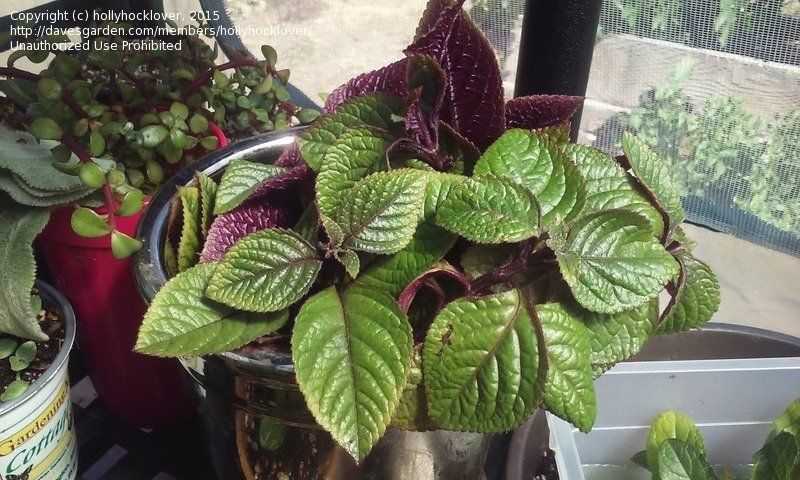Contents
Cascading Color: Unveiling the Beauty of Trailing Plants with Purple Undersides
Trailing plants are a delightful addition to any indoor or outdoor space. They add a touch of life and whimsy by gracefully cascading down shelves, hanging baskets, or spilling over the edges of pots. But what if you crave a pop of color alongside the cascading greenery? Look no further than trailing plants with purple undersides! These beauties offer a captivating combination of overflowing foliage with a touch of mystery revealed on the leaf’s underside. Let’s delve into the world of these unique plants, exploring their colorful secrets and popular varieties to add vibrancy to your surroundings.
The Allure of Purple Undersides: Unveiling the Why
The presence of green leaves with purple undersides is a fascinating adaptation in the plant kingdom. While the exact reason can vary depending on the species, here are some of the potential explanations for this intriguing coloration:
- Sun Protection: The purple pigmentation on the underside of leaves might act as a natural sunscreen, particularly for leaves that are positioned lower on the plant and receive less direct sunlight. By reflecting excess sunlight, anthocyanin, the pigment responsible for the purple hue, helps protect delicate tissues from sun damage.
- Temperature Regulation: In hot climates, the purple pigments might play a role in temperature regulation. Anthocyanin can help reflect sunlight, preventing the leaf from overheating, especially beneficial for trailing plants that may drape in areas with higher sun exposure.
- Pest and Disease Defense: Studies suggest that anthocyanin may also play a role in deterring herbivores and insects from feeding on leaves. Additionally, some research indicates that anthocyanin might have antifungal properties, offering some protection against diseases.
It’s important to note that the exact reason for the purple coloration on the underside of leaves can vary depending on the plant species and its growing environment.
A Gallery of Cascading Color: Popular Trailing Plants with Purple Undersides
Here are some of the most captivating trailing plants that showcase this delightful color combination:
-
Tradescantia zebrina (Inch Plant, Wandering Jew): This ever-popular, fast-growing vine features vibrant green leaves adorned with attractive silvery-purple stripes running along the underside. It’s a low-maintenance houseplant that thrives in bright, indirect light.
-
Plectranthus australis (Swedish Ivy): This cascading vine showcases glossy green leaves with a distinctive reddish-purple underside. Swedish ivy is a versatile plant that can be grown as a trailing houseplant or a groundcover in warmer climates.
-
Setcreasea purpurea (Purple Heart): This stunning vine boasts deep purple foliage throughout, with the undersides showcasing an even richer and more vibrant shade. Purple Heart thrives in bright, indirect light and enjoys moderate watering.
-
Callisia repens (Inch Plant): While some varieties of Callisia repens display solely green foliage, others boast captivating green leaves with a contrasting purple underside, similar to its close relative, the Tradescantia zebrina. Callisia repens is a fast-growing vine that prefers bright, indirect light and well-draining soil.
-
Aptenia cordifolia (Heartleaf Aptenia): This charming succulent vine features plump, heart-shaped green leaves with a beautiful reddish-purple coloration underneath. Aptenia cordifolia appreciates bright light and well-draining soil, making it a great choice for sunny windows or hanging baskets.
-
Fuchsia boliviana (Bolivian fuchsias): Known for its elegant, dangling flowers, the Bolivian fuchsia also boasts beautiful green foliage with a contrasting purple underside. This flowering vine prefers cool to moderate temperatures, bright, indirect light, and consistent moisture.
These are just a few examples, and there are many other trailing plants waiting to be discovered, each offering unique variations on the green-and-purple theme.
Cultivating Cascading Success: Caring for Your Purple-Undersides Beauties
Trailing plants with purple undersides are generally easy to care for, but here are some general tips to keep them thriving:
- Light: Most of these plants prefer bright, indirect light. Avoid harsh, direct sunlight, which can scorch the leaves.
- Watering: Water regularly, allowing the top inch of soil to dry slightly between waterings. Overwatering can lead to root rot.
- Humidity: Many trailing plants appreciate moderate to high humidity levels. Grouping plants together, using a pebble tray, or running a humidifier can increase humidity around your plants.
Frequently Asked Questions (FAQ) about Trailing Plants with Purple Undersides
- What is the easiest trailing plant with purple undersides to care for?
The Tradescantia zebrina (Inch Plant, Wandering Jew) is generally considered one of the easiest trailing plants to care for. It’s fast-growing, tolerates a wide range of light conditions (from bright indirect light to some low light), and doesn’t require frequent watering.
- Can trailing plants with purple undersides be grown outdoors?
Some varieties can be grown outdoors in warmer climates with well-drained soil. However, most prefer the controlled environment indoors and might not tolerate frost or intense heat. Always research the specific needs of your chosen plant before placing it outdoors.
- My trailing plant with purple undersides is losing its leaves. What could be wrong?
There are a few possibilities. Overwatering is a common culprit. Ensure the pot has drainage holes and allow the soil to dry partially between waterings. Insufficient light can also lead to leaf loss. Check if your plant is receiving adequate bright, indirect light. Additionally, pest infestation or disease could be a factor. Inspect your plant closely for signs of insects or fungal problems.
- Is it safe to keep trailing plants with purple undersides around pets?
Some varieties, like Tradescantia zebrina, can be mildly toxic to pets if ingested in large quantities. If you have curious pets, it’s best to keep these plants out of reach or choose non-toxic trailing varieties.
- Where can I find trailing plants with purple undersides?
These plants are readily available at many garden centers, nurseries, and online retailers.
With their cascading foliage and captivating touch of purple, trailing plants with purple undersides add a touch of whimsy and vibrancy to any space. By understanding their needs and providing proper care, you can cultivate a thriving cascade of color to enhance your indoor oasis. So, explore the diverse world of these trailing beauties and let them grace your shelves, hang from your baskets, or spill over the edges of your pots, bringing a touch of the unexpected with their captivating combination of green and purple.




